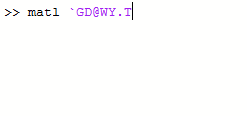Tantangan Anda adalah mencetak input, menunggu sejumlah waktu, mencetak input, menunggu dua kali lipat waktu Anda menunggu, mencetak lagi input, dan sebagainya. Penundaan awal harus kurang dari 1 jam, dan Anda harus memiliki keakuratan +/- 5% pada penundaan berikutnya. Selain itu, tidak ada batasan waktu tunda.
Contoh:
Input: hi.
Output: hi(jeda 1ms) hi(jeda 2ms) hi(jeda 4ms) hi(jeda 8ms) hi(jeda 16ms), dll.
Juga diizinkan:
hi(Jeda 1 menit) hi( jeda 2 menit) hi(jeda 4 menit) hi(jeda 8 menit) hi(jeda 16 menit), dll.
Input harus disediakan di awal program (STDIN, parameter baris perintah, parameter fungsi, dll.) Dan akan berupa string.
Penundaan awal tidak boleh 0.
y=x=>(x&&alert(x),y())secara teknis akan diizinkan, tetapi saya akan menurunkannya.
![atur [n] ke [1]; selamanya {katakan [x]; tunggu (n) dtk; atur [n] ke ((n) * (2))}](https://i.stack.imgur.com/bAA0P.png)
